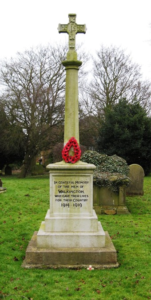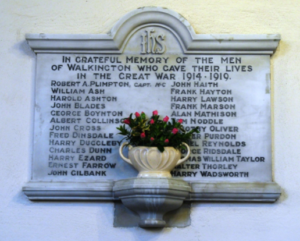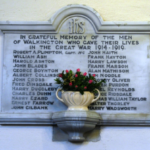

Robert was born in 1897, in Walkington, the son of Robert Richardson Ridsdale (1860-1935) and Mary Haldenby, Market Gardeners of Northgate Walkington;
He had a younger brother, John Ridsdale and two older sisters, Doris who married George Davy, and Mary. In 1911 Robert was listed aged 14 years as a farmhand.
When war began he was 5 foot, 7 inches tall, 36-38 inch chest, 124 lbs weight,
He enlisted at Wenlock Barracks, Hull, on 12/04/1915. Served as a Gunner, 2127, in the 2nd (Northumbrian Brigade), RFA. Posted to France, on 17/08/1916 and did not return to England, until 21/02/1919. Discharged on 21/03/1919, after 3 years and 344 days service.
He died just after the finish of the war after gas poisoning.
George died at home which was Westfield House, this house was just behind where Fern Cottage is now, at the far western edge of the village.
He is buried in Walkington Churchyard in a grave with the insignia of the Royal Field Artillery which is inscribed: 92371, Gunner, G. R. R. Ridsdale, R F Artillery, 5th December 1919 aged 23, Worthy of remembrance.
The Royal Field Artillery was the most numerous arm of the artillery; the horse drawn Royal Field Artillery was responsible for the medium calibre guns and howitzers, deployed close to the front line and was reasonably mobile. Farm lads would be very useful in this capacity as they understood how to use horses. There are many Ridsdales’ buried in the churchyard and relatives living in the East Riding.
The use of air borne poisonous chemicals was responsible for hundreds of thousands of deaths and injury, victims lived truncated disabled lives in the post war era and this contributed to the banning of chemical weapons in 1925. He is buried in Walkington church cemetery. His grave inscription, reads, “WORTHY OF REMEMBRANCE”.
